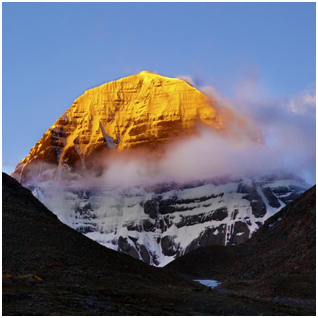Landscapes in Burang, Ngari (Remote regions of Tibet series I)
Burang County is in the south of Ngari Prefecture Tibet Autonomous Region, sitting at the boundary of China, India and Nepal. Burang means ''single hair” in the Tibetan language. The county is relatively small having about 15 thousand square kilometers of land area. Because of its location, trade with south Asia also has a long history, and up until present remains one of the highlights in visiting this region.
In capital of Burang county can be found the “Burang International Market” which is a kind of “port” generally open from mid-summer until mid-autumn every year. When in the area, the Ko’s village is also an interesting attraction for tourists, which typically represents various Burang customs. The Nepal border is not far from there (within 8 kilometers). Various merchants travel to and from the market across the border by interesting modes of transportation such as horse, donkey and yaks. But this is not the only interesting animals in the area as Tibetan antelopes, wolves, foxes and other animals can be seen in abundance.
This region is regarded as a holy place for the Tibetan people particularly for being in proximity to two landmarks: Mt. Kailash andLake Manasarovar. In fact, Kailash is one of Tibet’s relatively shorter mountains, yet it has a pyramid shaped rocky appearance that make it look like Maroon Bells (a set of rocky peaks near Aspen, Colorado) on steroids.
The name in Sanskrit which was transliterated into English as Kailash actually means “crystal”. One fact that surely leads to the mountain become a place of religious importance must be that several rivers start in the vicinity including the Indus River, the Sutlej River, the Brahmaputra River, and the Karnali River.
Being such a holy place attracts devout religious followers from different parts of Tibet as well as from abroad to the region. Below the mountain rests Lake Manasarovar which has through the ages been regarded by religious devouts to have divine and transformative powers if drinking from. The lake is 90 meters at its deepest and relatively round in shape. One cannot forget a sunrise or sunset in the area. There are many other lakes, beautiful mountains and other natural terrain in the region worthy of travel to by local horseback trips.

Mt. Kailash at sunrise caressed by low lying clouds
Getting to the region is not easy. From Shigatse (accessible from Lhasa or Kathmandu) - you need to travel to Saga - Lake Manasarovar which is 4 days on a hired jeep and even longer by a combination of public transportation. It can also be accessed from Shigatse via Ngari to Darchen which is 6 days on a jeep. A third option takes you from the city of Kashgar in China’s northwest Xinjiang Uyghur Autonomous region via Ngari entering Tibet from its remote northwestern corner. Those who make the journey to this region will be sure to have a travel highlight of their lifetime as the feel the intensity of wide open spaces, sparsely inhabited terrains and seemingly unending lofty Himalayan peaks.
Your Comment
Name E-mailRelated News
-
;
-
-

-
Exquisite Burang costume in Ngari
Burang, the border town with Nepal and India in Ngari Prefecture, southwest Tibet has the most unique and exquisite "Burang costume" with a history of 1000 years.
-
-
-

-
In pics: Burang costume in China's Tibet
Burang costume, which has a history of more than 1,000 years, is famous for its luxurious accessories. Hundreds of pieces of beeswax, numerous pearls and kallaties, bunchy red corals and delicate silver and gold decorations compose of priceless suite.
-
Based in Lhasa, Tibet Vista is a Tibet travel agency that specialized in Tibet permit, and Tibet tours for both private and group travelers at a local price!
•4 Days Lhasa City Group Tour from USD 460 •8 Days Everest Base Camp Group Tour from USD 850 •15 Days Mt.Kailash Group Tour from USD 1780 •2016 Tibet Train Tours from Beijing, Shanghai, Chengdu, Xining,etc










